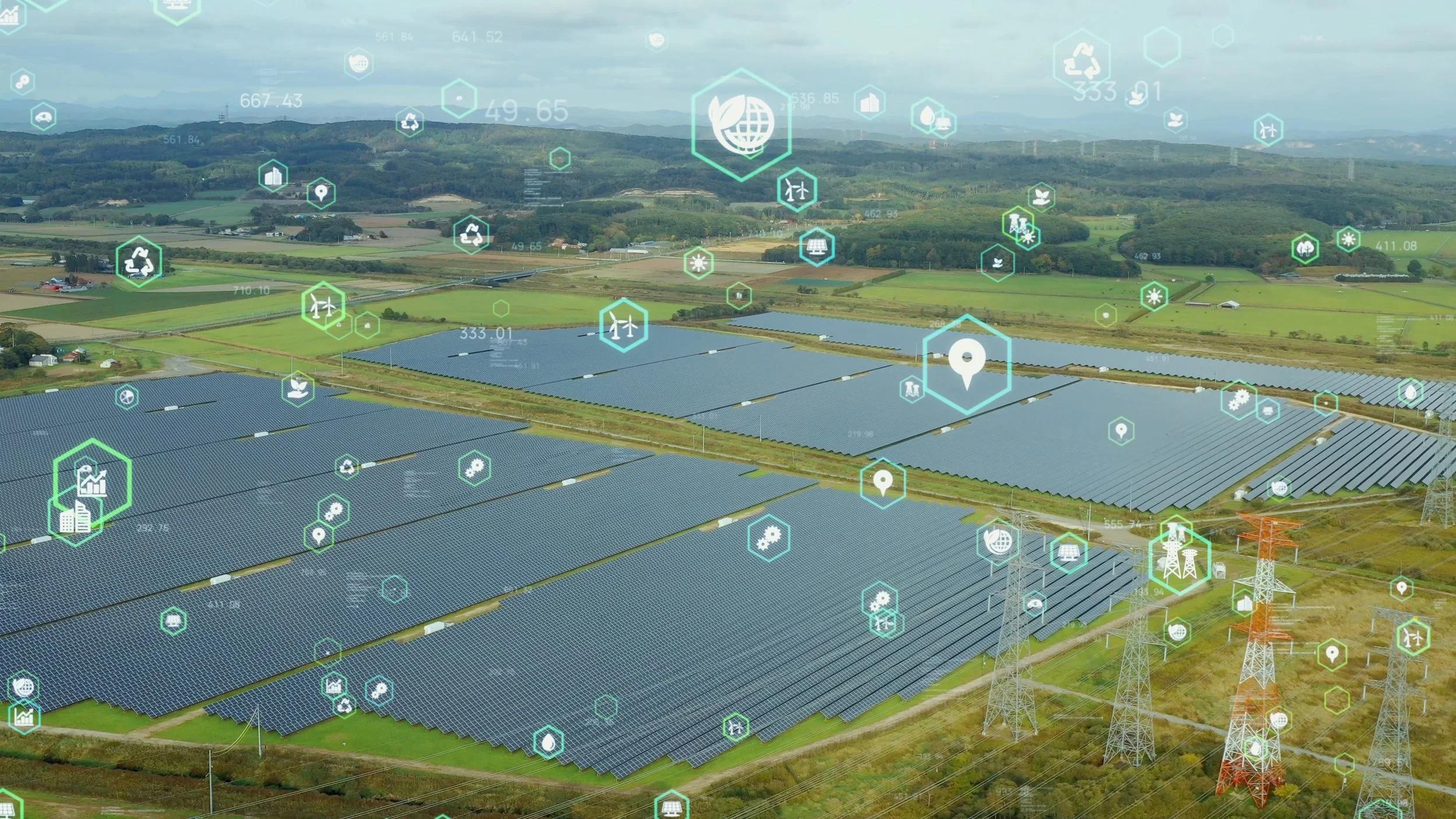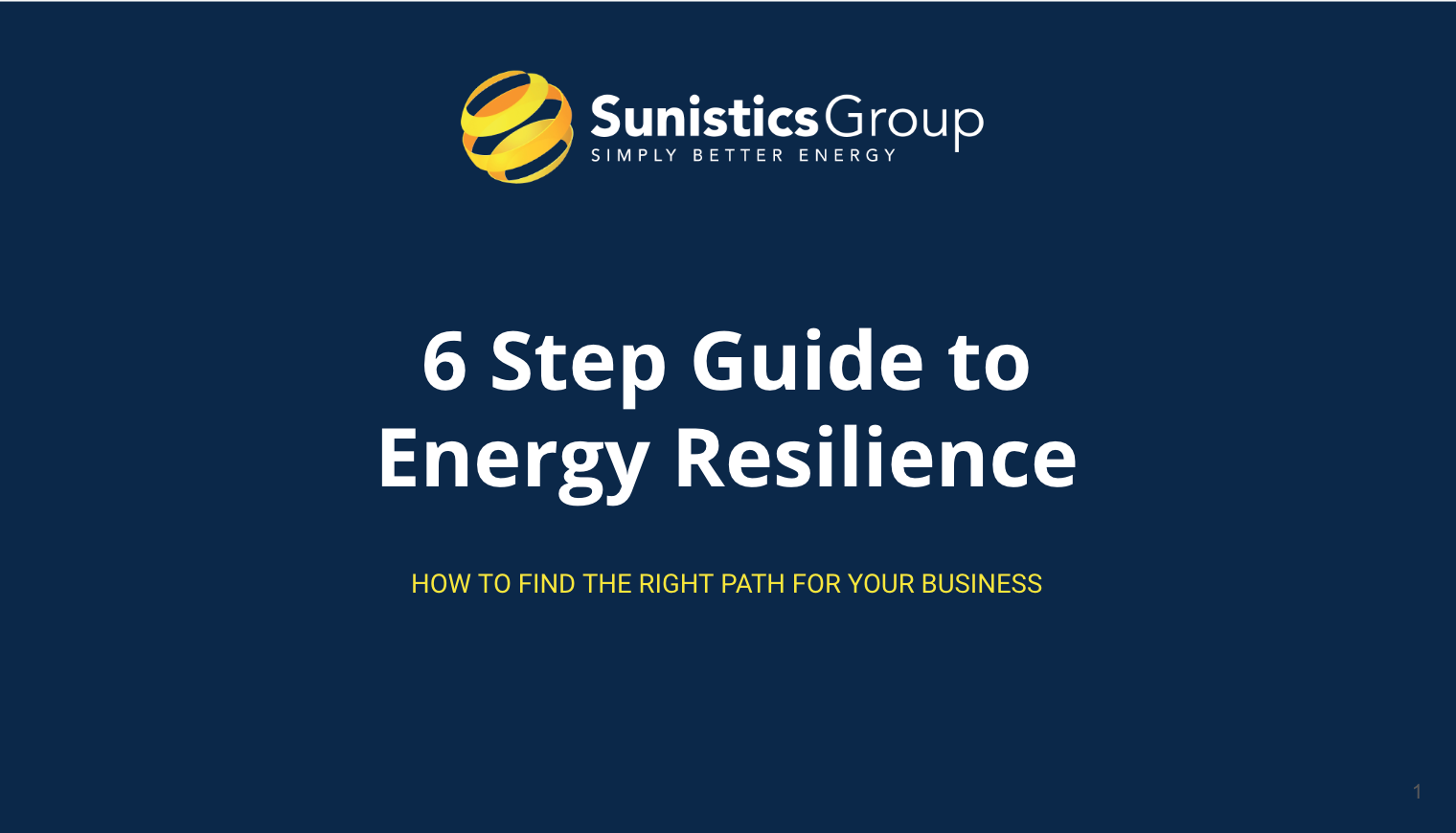Our aim is to help you plan for disruptive events and minimize, or even eliminate, the downtime and uncertainty that they cause. We think it is easier to determine the best pathways forward if we talk over the phone, video, or in person, but we understand that it often helps to do some reading first. And if you’re finding yourself on this page, that’s more than likely what you want to do.
So here are a few of our documents that attempt to explain the issues at hand and the different ways there are to combat them. Please feel free to download any of the PDFs and if you want to chat to us at some point, you can set up a call with us just as easily.
6-Step Guide to Building Energy Resilience
More and more West Coast businesses are focusing on energy resilience to fight back against the rising threats and costs of power supply uncertainties. But if your business is just starting to dig into the details, it can be difficult to know where to begin and how to arrive at the solution that is right for you. So we have compiled a helpful six-step guide to get you moving.
1. Identify & prioritize your Project Goals
Establish what you really need in a resilience solution.
4. Work with an expert to capture incentives
Capturing the many available energy incentives is lucrative, but fraught with paperwork!
2. Understand how storage delivers resilience
Do you need fast response backup power or to bridge the gap between outage and micrgrid ramp-up?
5. Maximize project economics
Make the best case for project approval by calculating its full value beyond incentive payments and inclusive of avoided costs and demand charge shaving.
3. Develop and Maintain a big-picture strategy
Before selecting hardware, software, and installation partners, think about your broader energy ecosystem.
6. Choose well for install, commissioning and operation
Ensure clarity of your pre-established goals and your energy strategy, and focus on quality.
Download the 6-Step Guide to Building Energy Resilience for free here or email us at customer@sunisticsgroup.com for your copy.
Power Outage Advice For Manufacturers and SMBs
Up and down the West Coast, it is less a matter of if your business will experience a power outage. It’s more a matter of when, how much damage will it cause, and how much will it cost. Unfortunately, for California in particular, loss of power via outages for maintenance or Public Safety Power Shutoffs (PSPS) is increasingly inevitable and we can help to minimize the impact.
Download the OUTAGE ADVICE FOR MANUfacturers and SMBs PDF for free here or email us at customer@sunisticsgroup.com for your copy.
Energy Storage Basics
What are the problems, challenges, and solutions for businesses facing resilience issues? Here’s our basic overview of energy storage, answering many of the questions that come up in various scenarios, along with all the typical ins and outs.
Download the Energy storage basics PDF for free here or email us at customer@sunisticsgroup.com for your copy.
Energy Resilience Options for Back-Up Power
Arriving at the right destination is always a journey worth taking, and as Renewable and Resilience Consultants, it’s our role to help you navigate the emerging possibilities of energy storage and find the solution that makes sense for your specific needs within your energy ecosystem. In order to do that, we need to analyze the qualitative and quantitative data and create a sustainability roadmap that leads us to where we want to go. But in a nutshell, here is a basic overview of where the road leads.
1. Energy Storage
Use: Momentary and medium duration outage.
Transfer Time: < 1 second
Environmental Impact: Increases renewable energy integration
Economics: Generates significant savings and a revenue stream.
2. UPS -Uninterrupted power supply
Use: Momentary and short-term outage, bridging the gap until power source restored.
Transfer Time: Instant
Environmental Impact: Minimal
Economics: More expensive the Energy Storage per kWh.
3. Backup Generator
Use: Multiple days.
Transfer Time: 8-15 seconds
Environmental Impact: Local C02 emissions, fuel storage.
Economics: Capex required, no incentives or savings.

















